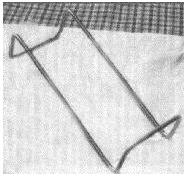
Tubular steel grab rail designed to facilitate bed mobility. Looped design forms a rectangular section which is positioned under the mattress and extends up the side of the mattress to form a looped grab rail. Adjustable and double bed versions available.
The Health Store
Manufacturer's Product Description
Held safely in place by the mattress, usually without the need for further fixing Versatile, light and durable, hygienic and scratch-resistant; made from polished stainless steel Unobtrusive, yet allowing dignity and independence Portable - can easily be stored and transported and taken home by patients on discharge Gives support to patient while dressing and moving in and out of bed Allows convalescing patients to return to home environment widely used by hospitals and care institutions
Manufacturer's Contact Details
Unknown
No Address set
Key Features
No Key Features have been specified for this product
Product Dimensions
| Dimensions | |
|---|---|
| Height | 22cm |
| Length | 97cm |
| Width | 32cm |
Product Specification
No product specification has been specified.